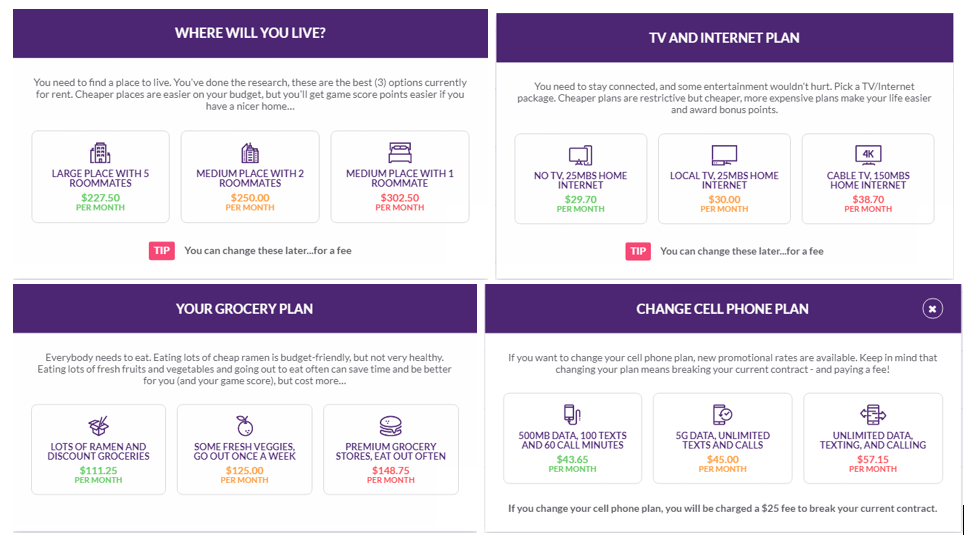Bringing gamification into your classroom By Paul Vasey – Former Business teacher, head of department, external examiner, teacher trainer, author and game designer.
Engagement, experiential learning and differentiation.
Through my years of teaching, I found that the most engaged students were ones that were talking about themselves and learning without really realizing it. To expand on this – I liked to use a lot of activities and discussions to teach the basics of concepts before adding theory and terminology so that there was a fundamental understanding of the topic being covered. I would involve the student by making it about them, whether it was a story or an activity so that they could relate and build.
With the PFinLab platform, we do that. We have 2 games, a budgeting game and a stock market game. Students have direct buy in as their decisions made throughout show consequences, which creates an experience that empowers the student to talk about it. We all want students talking about the things we are trying to teach!
Our Budgeting and Stock Market game can be used as both a supplemental and integrated resource. The philosophy of our games is for the students to learn by doing. The focus of the game is to keep things simple and for the student to learn the fundamentals of money management. This resource is not here to replace you, but merely to become a teaching tool that you can use to introduce or consolidate a topic, so the basics can be understood, while theory and terminology can be scaffolded onto initial understanding.
Over time I will be picking an aspect of the game and giving ideas of how it can be used in the classroom. The aspect will include playing the game, completing an activity to apply knowledge and then answering questions to consolidate knowledge.
Lesson 1: Opportunity Cost and Comparison Shopping
Here is a QuickStart lesson that I like to use with my classes to introduce some of the fundamentals of money with our Budgeting Game. Each lesson will require the player to play at least one “virtual month” in the game which will take approximately 20 mins. Further time can be taken to do research and answer questions. Differentiation can be by outcome.
Activity – Making a decision:
When the game starts, the students will have to make choices. They will need to consider their needs and wants, what the alternatives are (opportunity cost) and is it the best price that they can find. Although they will be focusing on price, it is important to recognize that the price is not always the single factor in making a decision.

Here are some sample questions for your students to consider based on deciding where they want to live. These can be done as a written or verbal (group) exercise.
Questions: Testing Understanding
- When renting, why should cost not be the only consideration?
- How might the location of an apartment have an influence on the monthly rental price?
- What are the advantages and disadvantages of sharing an apartment with other people?
- Using a realtor website such as Zillow and Realtor.com, find 3 rental properties that you would like to live in and compare pricing, proximity to college and other amenities.
- If you are sharing an apartment with others, why is it important to set ground rules?
I hope you enjoy teaching this lesson as much as I do.
Keep an eye out for another lesson shortly. Any feedback, ideas or requests for lessons on topics, let us know!
[contact-form-7 id=”17211″ title=”Pfinlab Contact Form”]
